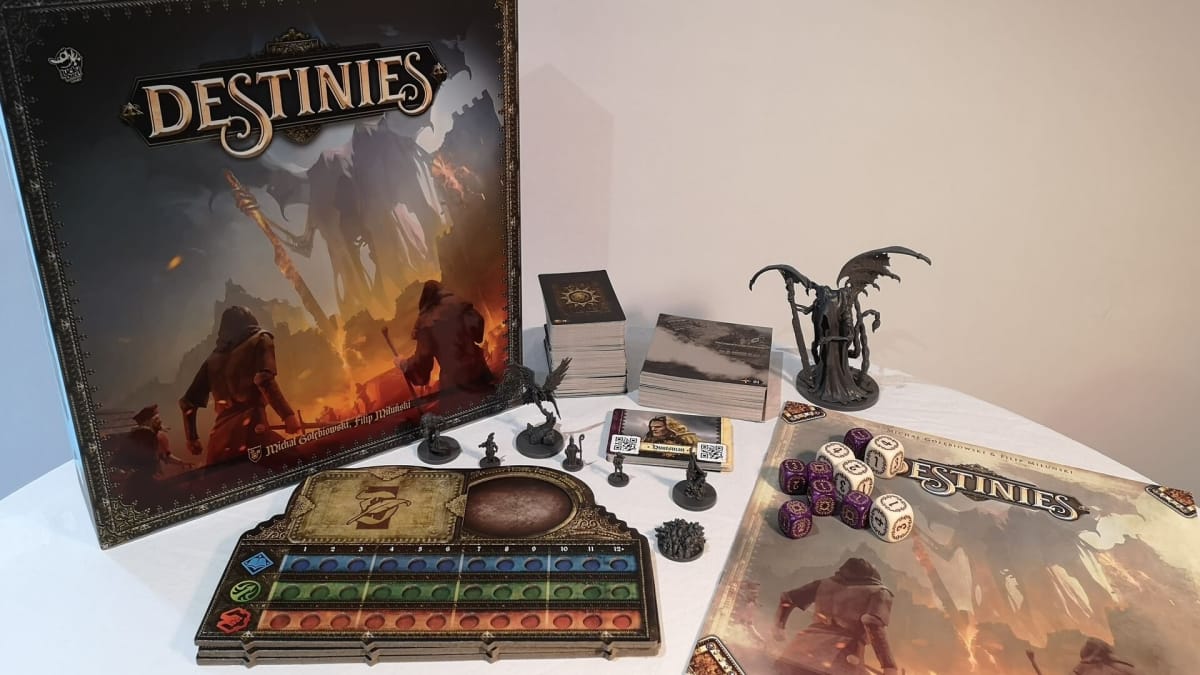Destinies is a perfect melding of the investigative story mechanics from Time of Legends: Joan of Arc and Lucky Duck Games’ fantastic app-driven scenarios from Chronicles of Crime. If you like those elements of either of those games, we’ll save you some time, you’ll almost certainly love Destinies. But if you’d like to know more, or you’ve never heard of those games, then read on for our spoiler-free review.
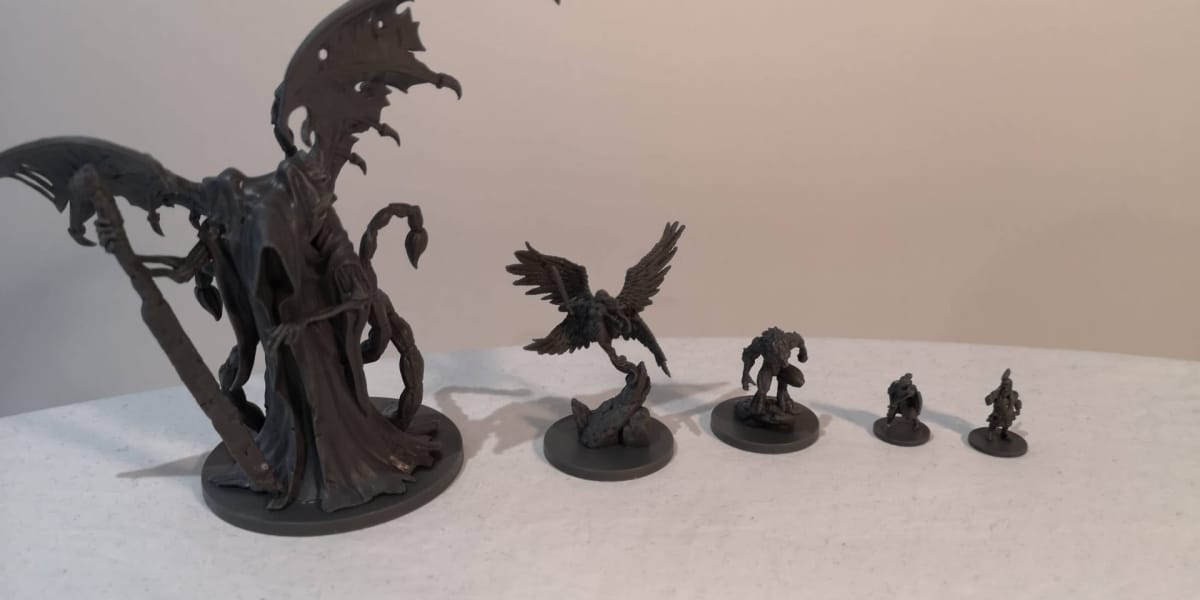
Destinies is set in a mythical historical European setting around the 14th Century, the time of Joan of Arc and the Black Death. Players take on the roles of characters from a variety of backgrounds in an evolving narrative across five scenarios.
Destinies can be played solo in two modes, or with two or three players. Using the app, which is available on mobile and PC, players pick a scenario, select the number of players, then each player picks one of the three available characters for the scenario. The app then describes the setup for each character, which usually involves collecting an item, a coin token, the miniature for the character, and placing wooden markers on the character’s stat track.
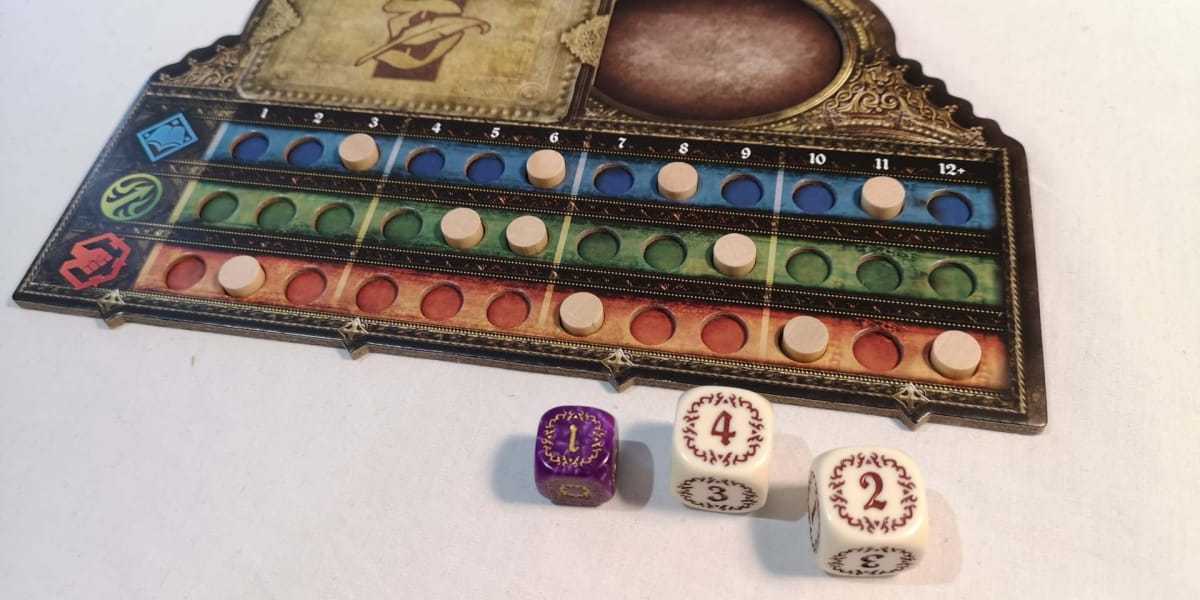
Each character has three stats, Intelligence, Dexterity, and Strength, and a number of wooden markers are placed on a track for each. They are used for tests throughout the scenarios, where players roll two different types of dice. Each player has two main dice, which are used for every test, and smaller effort dice, which players recover one of a turn, and are discarded when used. Players can have up to three effort dice, and decide how many to commit to tests.
To take a test, players roll their main dice and any effort dice committed. They total up the number rolled and find that number on the stat track. The number of wooden pips they have between the number rolled and one, is the number of successes they have achieved and the results are inputted into the app to determine the results. Players never know how many successes they need, but the most that can be rolled is six, and you can generally get a feel for how difficult a task is.
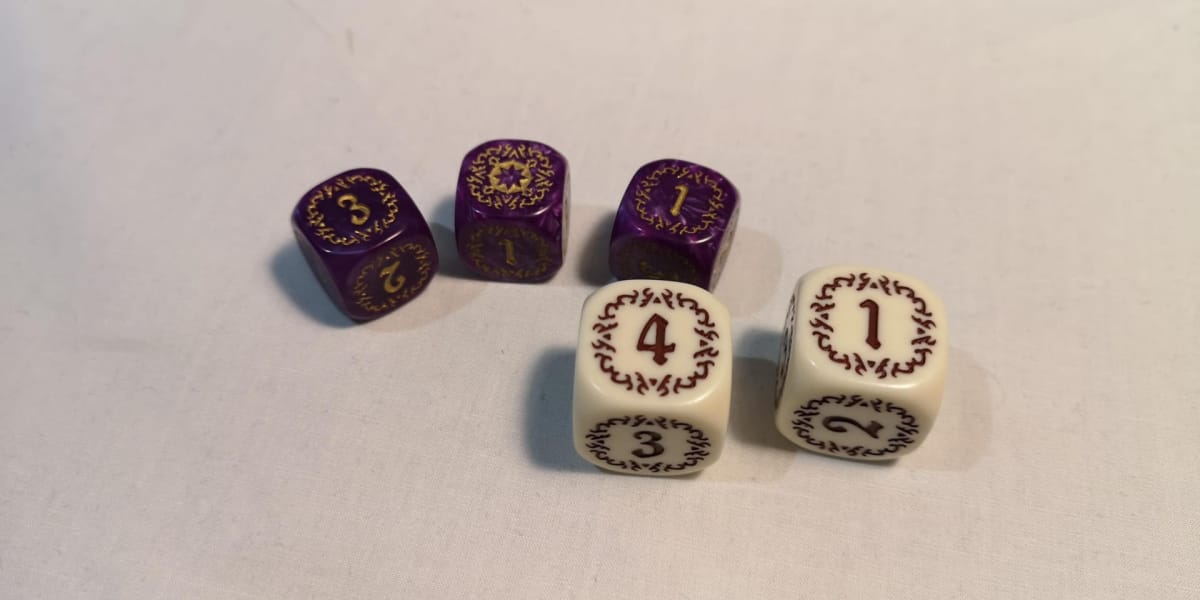
At the start of the game, players are read an introduction to the scenario on the app, then they begin setting up the map as directed by the app. The first map tile is placed, along with any elements on it, like characters and points of interest, which are a mixture of tokens and miniatures. Some will recognize the miniatures as the small-scale miniatures from ToL: Joan of Arc. Other map tiles are then placed around the starting tile, but these are placed face-down and have a fogged-out graphic to show they are unexplored.
Each player has a card for their character, which has an introduction to them, along with two destiny options. Players need to work towards one of these options, which are kept secret from other players, and sometimes overlap with other player’s destinies. They are a mix of helping the non-player characters on the map, either through completing tasks, finding items, or fighting beasts and mythical monsters.
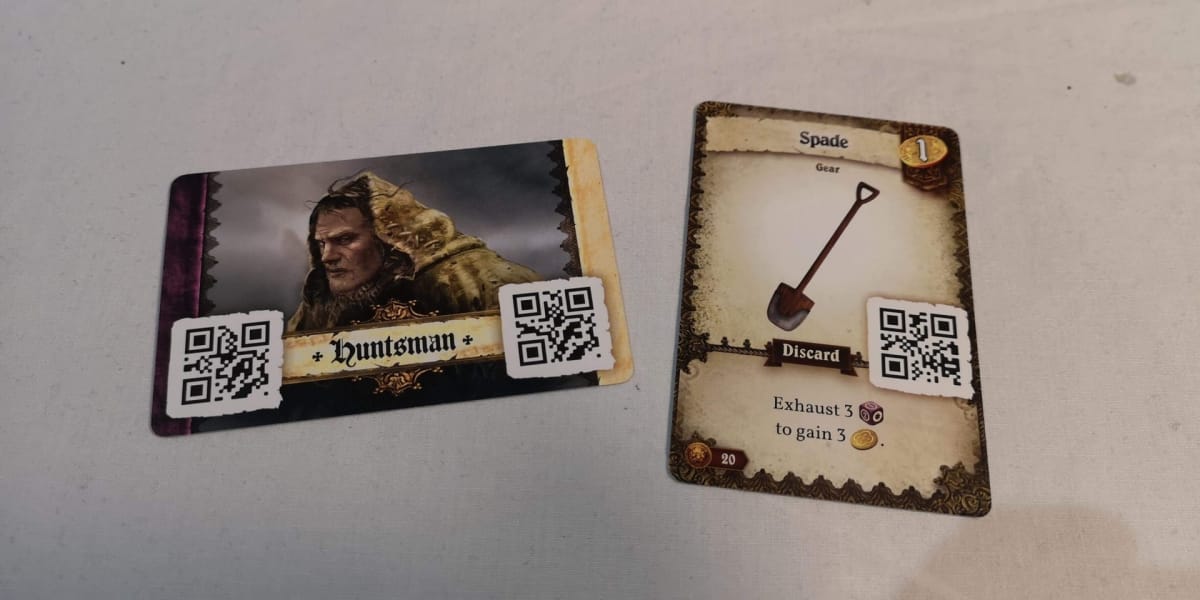
Once their destiny is complete, that player can enter the final challenge mode and move through a set of standard turns for their end game. Players can fail tests and choices during this, so even players who haven’t reached that stage can still catch up.
Players can gather items as they explore the map and meet characters, and these can range from humble items like spades and herbs, all the way up to sacred holy items and powerful weapons. These items either offer a permanent benefit or ability or have to be discarded to use them, they also all have a QR code, which lets the items interact with the app. If a non-player character is looking for an item, you can scan it when interacting with them. Sometimes items also let you auto-win tests, rather than making a roll, like scanning a spade rather than digging with your hands.
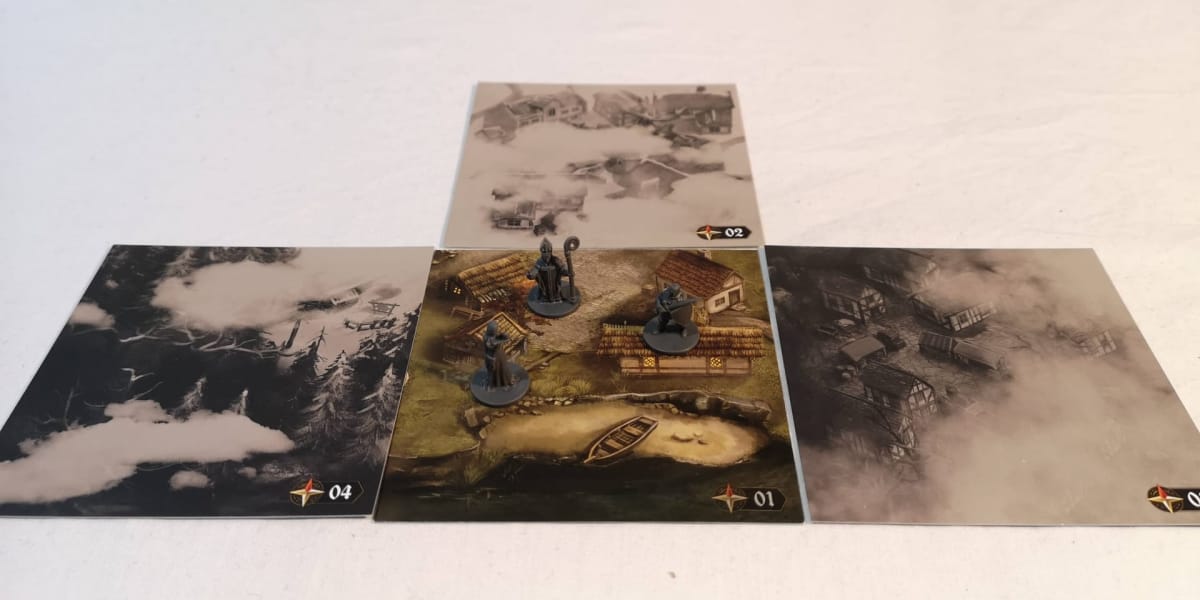
In the base game, there are five scenarios to play through, and while they can be played again, it would have to be with other players who have played through the scenarios, to stop anyone from having an unfair advantage. A separate expansion is available, with two more coming, but out of the base game, there’s limited play. Playing through the missions is a joy and a great experience, but it’s worth noting that this might not see play beyond a single playthrough. Playing solo after playing through with a group is still worthwhile, and you can play through casually, or in the challenge mode which puts the pressure on you with narrative time-limited.
The app controls work very well, and while most of the action takes place on the app, the physical map and miniatures help to orientate yourself and follow the action. It could be an entirely app-based game, but the physical elements really help immersion, especially when playing with a group.
The narrative choices in the game are also handled very well, and the choices you make can have positive and negative effects later on in the game, which feels incredibly thematic as the games go on, even down to minor actions and choices you make. If you don’t keep up with the narrative elements and read events as they happen, the story can get away from you, so it’s important that the player whose turn it is, reads out the pop-ups as they appear, to keep everyone involved.
The Bottom Line
Destinies is an extremely well-put-together package. The use of the small-scale Time of Legends miniatures keeps the box small and price point down, which matches the limited play of the five scenarios perfectly. The narrative app-driven elements are handled very well, and the interaction of physical and app content feels very natural. The missions are exciting and well designed and working through the linked scenarios with the same group, towards the final endgame is a very rewarding experience.
Get This Game If:
- You want a great narrative-linked scenario.
- You want awesome app integration.
- You love Chronicles of Crime or ToL Joan of Arc
Avoid This Game If:
- You don’t want an app-driven tabletop game.
- You don’t want a limited playthrough game.
The copy of Destinies used to produce this review was provided by Asmodee UK.
Review Summary
Have a tip, or want to point out something we missed? Leave a Comment or e-mail us at tips@techraptor.net
